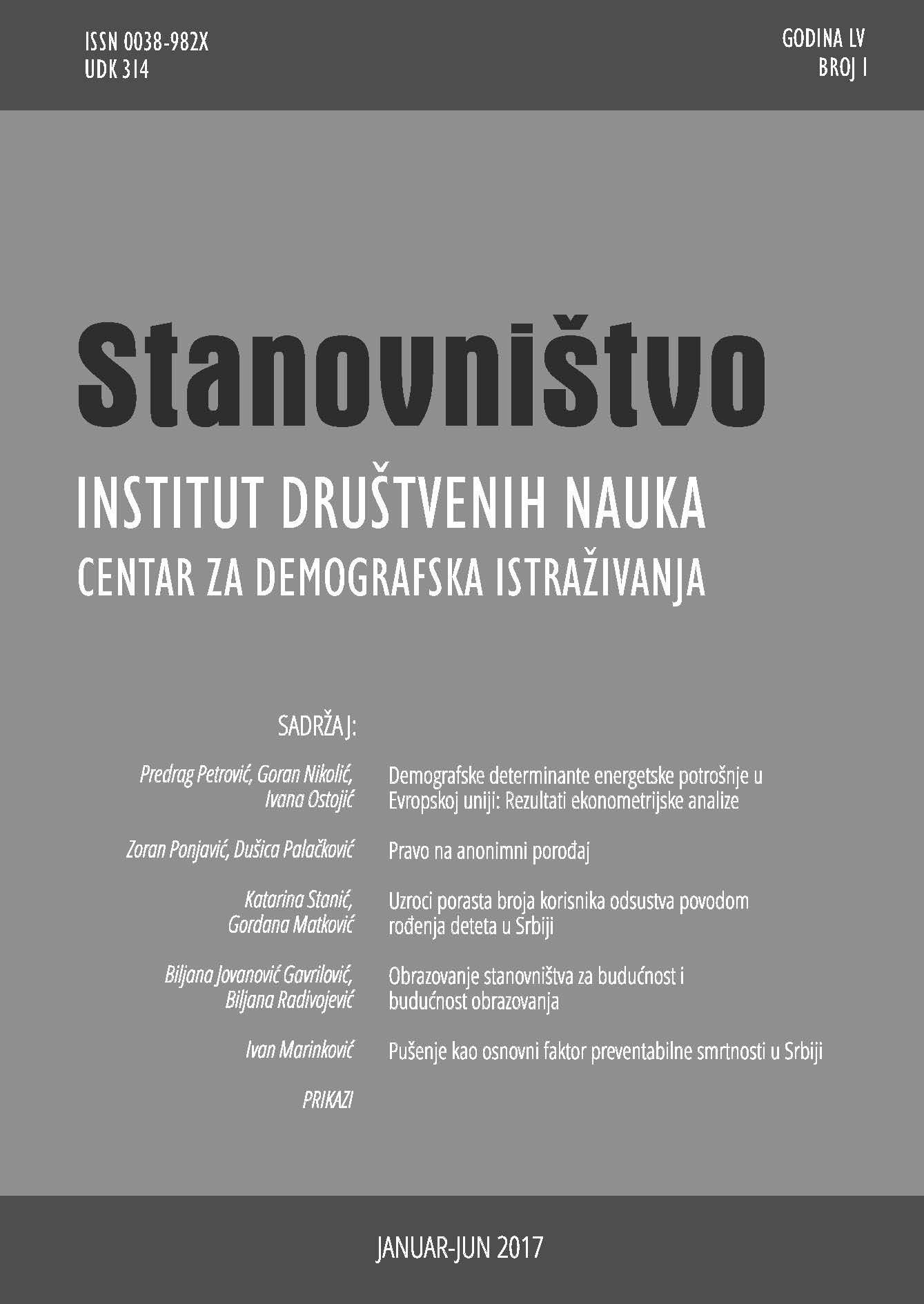Pušenje kao osnovni faktor preventabilne smrtnosti u Srbiji
Smoking as the Main Factor of Preventable Mortality in Serbia
Author(s): Ivan Ž. MarinkovićSubject(s): Demography and human biology
Published by: Институт друштвених наука
Keywords: mortality; smoking; Peto-Lopez method; Serbia; life expectancy
Summary/Abstract: The use of tobacco in Serbia has for many years been one of the most frequent risk factors affecting disease development. Although its impact is often neglected and the effects on health minimised, reviewing the existing literature and calculating the tobacco consumption impact on the mortality of the population in Serbia (using the Peto-Lopez method) show a clear link between smoking and health of the population. Serbian population is heavily burdened with the negative effects of tobacco on health, especially men. At the beginning of the second decade of the 21st century, mortality from the illness or cause of death associated with smoking was at about 17% of the total mortality. In men, it is estimated that even a quarter of the total mortality is associated with smoking. In the female population, the share of smokers is considerably lower, and consequently the mortality from this factor is lower, about 9% of the total mortality. Of all major disease groups, tumours are most affected by smoking. The share of tobacco-related mortality in neoplasms is high and accounts for 30% (43% in men and 14% in women). In cardiovascular diseases, the impact of smoking is much smaller and about 6,000 deaths per year are associated with the use of tobacco. Since the early 1990s, the number of smoking-attributable death has been growing. Relatively, the share of men has not changed, but for 20 years of analysis the share of women has significantly increased from 5% to 9%. In all age groups, the share of smoking-related mortality has increased in the female population, especially in the 45-69 age range where mortality has been doubled. Surveys on the health of the Serbian population also confirm the trend of increasing the share of women smokers in the population, especially in the categories of young people. Men in Serbia (35-69 years of age) have the highest smoking-attributable death rate in Europe. As much as 44% of total deaths in that age are directly related to smoking. Besides Hungary, where mortality in men is also relatively high (42%), other countries have significantly lower shares. Observed at the level of the entire continent, countries of the Balkan Peninsula (and their neighbours) have the highest shares of smoking-attributable death. Women in Serbia have a moderately high share of 9% and are among the ten most vulnerable countries in Europe. The biggest difference in smoking-related mortality by gender is observed in the Pyrenees Peninsula and in the eastern and south-eastern parts of Europe. These are also the countries with the largest absolute difference in the mortality rate of men and women, thus confirming the hypothesis that tobacco smoke, as a single mortality factor, plays the most important role in establishing a different gender mortality pattern. A high percentage of smokers in the total population limits the growth of life expectancy and affects the difference in gender mortality rate. If a certain mortality factor potentially affects the life expectancy of up to three years for men in Serbia, as shown in the paper, then it is especially important to pay attention to measures of prevention and awareness of the population regarding this issue. Moreover, it is particularly important to recognise the consequences of passive smoking the youth and children are exposed to, since in Serbia there is a great deal of tolerance for smoking indoors.
Journal: Stanovništvo
- Issue Year: 55/2017
- Issue No: 1
- Page Range: 87-106
- Page Count: 20
- Language: Serbian

